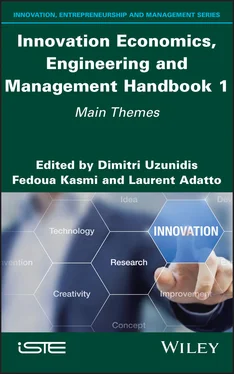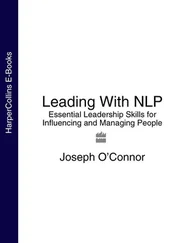Fagerberg, J., Mowery, D.C., Nelson, R.R. (2006). The Oxford Handbook of Innovation , 1st edition. Oxford University Press, Oxford.
Fleck, N. and Ambroise, L. (2019). Brand practices faced with augmented consumers. In Augmented Customer Strategy: CRM in the Digital Age , N’Goala, G., Pez-Pérard, V., Prim-Allaz, I. (eds). ISTE Ltd, London and John Wiley & Sons, New York.
Gartner, W. (2017). Entrepreneurship as Organizing . Edward Elgar Publishing, Cheltenham.
Gay, C. and Szostak, B. (2019). Innovation and Creativity in SMEs . ISTE Ltd, London and John Wiley & Sons, New York.
Gilly, J.-P. and Torre, A. (2000). Dynamiques de proximité . Editions l’Harmattan, Paris.
Gioia, D. and Chittipeddi, K. (1991). Sensemaking and sensegiving in strategic change initiation. Strategic Management Journal , 12(6), 433–448.
Granovetter, M. (1985). Economic action and social structure: The problem of embeddedness. American Journal of Sociology , 91(3), 481–510.
Granstrand, O. (1999). The Economics and Management of Intellectual Property: Towards Intellectual Capitalism . Edward Elgar Publishing, Cheltenham.
Guerard, S. and Seidl, D. (2013). Spaces of institutional work: A wonder drug and the single technology appraisal procedure in UK. Academy of Management Proceedings , 15952.
Hadjimanolis, A. (2000). An investigation of innovation antecedents in small firms in the context of a small developing country. R&D Management , 30, 235–245
Hall, E. (1966). The Hidden Dimension . Garden City, New York.
Howells, J. (2006). Intermediation and the role of intermediaries in innovation. Research Policy , 35(5), 715–728.
von Hippel, E. (2005). Democratizing innovation: The evolving phenomenon of user innovation. Journal für betriebswirtschaft , 55(1), 63–78.
Hussler, C. and Burger-Helmchen, T. (2019). La connaissance : l’atome de la stratégie. In Les grands courants en management stratégique , Liarte, S. (ed.). EMS, Caen.
Kim, C. and Mauborgne, R. (2005). Blue Ocean Strategy . Harvard Business School Press, Cambridge, MA.
Kmieciak, R., Michna, A., Meczynska, A. (2012). Innovativeness, empowerment and IT capability: Evidence from SME. Industrial Management & Data Systems , 112(5), 707–728.
Kor, Y. and Mesko, A. (2013). Dynamic managerial capabilities: Configuration and orchestration of top executives’ capabilities and the firm’s dominant logic. Strategic Management Journal , 34(2), 233–244.
Kotter, J. (2016). Des méthodes pour sauver les bonnes idées. Harvard Business Review , 11–15.
Laviolette, E.-M., Redien-Collot, R., Teglborg, A.-C. (2016). Open innovation from the inside: Employee-driven innovation in support of absorptive capacity for inbound open innovation. The International Journal of Entrepreneurship and Innovation , 17(4), 228–239.
Le Bas, C. and Szostak, B. (2016). Appropriation de l’innovation, multiprotection et actifs complémentaires : le cas d’une pme de télémédecine à l’ère numérique. Revue française de gestion , 42(254), 129–145.
Lubart, T., Mouchiroud, C., Tordjman, S., Zenasni, F., (2015). Psychologie de la créativité . (ed). Armand Colin, Paris.
Maskell, P. and Malmberg, A. (1999). Localised learning and industrial competitiveness. Cambridge Journal of Economics , 23, 167–185.
Massey, D. (2005). For Space . Sage Publications, London.
Morin, E. (2005). Introduction a la pensée complexe . College essays, Points, Seuil.
Pache, A. and Santos, F. (2013). Inside the hybrid organization: Selective coupling as a response to competing institutional logics. Academy of Management Journal , 56(4), 972–1001.
Pahl, G., Beitz, W., Feldhusen, J., Grote, K.-H., Wallace, K., Blessing, L.T.M. (2006). Engineering Design: A Systematic Approach , 3rd edition. Springer London Ltd, London.
Papaoikonomou, E. and Alarcón, A. (2015). Revisiting consumer empowerment: An exploration of ethical consumption communities. Journal of Macromarketing , 37(1), 40–56.
Paulus, P.B. and Nijstad, B.A. (2019). The Oxford Handbook of Group Creativity and Innovation . Oxford University Press, New York.
Piligrimiene, Z., Dovaliene, A., Virvilaite, R. (2015). Consumer engagement in value co-creation: What kind of value it creates for company?. Engineering Economics , 26(4), 452–460.
Porter, M. (1996). What is strategy? Harvard Business Review , 74(6), 61–78.
Prahalad, C.K. and Bettis, R. (1995). The dominant logic: Retrospective and extension. Strategic Management Journal , 16(1), 5–14.
Reitzig, M. (2004). Strategic management of intellectual property. MIT Sloan Management Review , 45(3), 35–40.
Royer, I. (2002). Les procédures décisionnelles et le développement de nouveaux produits. Revue française de gestion , 3(139), 7–25.
Schlager, E. and Ostrom, E. (1992). Property-rights regimes and natural resources: A conceptual analysis. Land Economics , 68, 249–269.
Sergot, B. and Saives, A.-L. (2016). Relating place and organization: A situated tribute to Doreen Massey. M@n@gement , 19(4), 335–352.
Shalley, C., Hitt, M.A., Zhou, J. (2016). The Oxford Handbook of Creativity, Innovation, and Entrepreneurship , Reprint. OUP USA, Oxford, New York.
Shane, S. (2009). The Handbook of Technology and Innovation Management . Wiley-Blackwell Chichester.
Shane, S. and Venkataraman, S. (2000). The promise of entrepreneurship as a field of research. Academy of Management Review , 25(1), 217–226.
Simon, L. (2009). Underground, upperground et middle-ground : les collectifs créatifs et la capacité créative de la ville. Management International/Gestiòn Internacional/International Management , 13, 37–51.
St-pierre, J., Bertrand, J., Uwizeyemungu, S. (2017). Accroître la performance en innovation des pme grâce à la gestion des risques : étude exploratoire sur des pme manufacturières. Gestion 2000 , 34(5), 315–336.
Suddaby, R. and Greenwood, R. (2005). Rhetorical strategies of legitimacy. Administrative Science Quarterly , 50(1), 35–67.
Teece, D., Pisano, G., Shuen, A. (1997). Dynamic capabilities and strategic management. Strategic Management Journal , 18(7), 509–533.
Tödtling, F. and Trippl, M. (2005). One size fits all? Towards a differentiated regional innovation policy approach. Research Policy , 34, 1203–1219.
Tsoukas, H. and Chia, R. (2002). On organizational becoming: Rethinking organizational change. Organization Science , 13(5), 567–582.
Viot, C. (2010). “Toi aussi, deviens mon ami” : intégrer le web 2.0 dans sa stratégie de communication. Décisions marketing , 58, 77–82.
Wang, C.-L. and Ahmed, P.-K. (2004). The development and validation of the organisational innovativeness construct using confirmatory factor analysis. European Journal of Innovation Management , 7(4), 303–313.
Weick, K. (1976). Educational organizations as loosely coupled systems. Administrative Science Quarterly , 21(1), 1–19.
Weick, K., Sutcliffe, K., Obstfeld, D. (2005). Organizing and the process of sensemaking. Organization Science , 16(4), 409–421.
Westley, F., Antadze, N., Riddelli, D., Robinson, K., Geobey, S. (2014). Five configurations for scaling up social innovation: Case examples of nonprofit organizations from Canada. The Journal of Applied Behavioral Science , 50(3), 234–260.
1 1 Neologism in French.
Читать дальше












